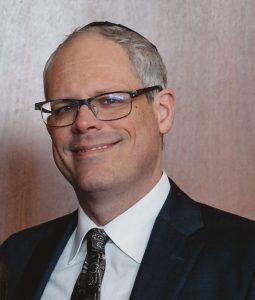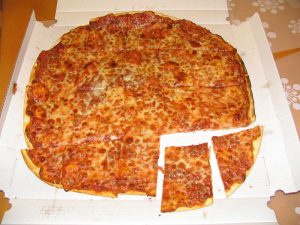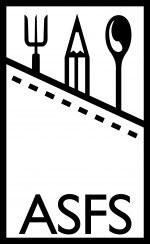
Geographer and ASFS board member Daniel Block
Daniel Block is Professor of Geography at Chicago State University, where he studies food availability and access. He is coordinator of the Fredrick Blum Neighborhood Assistance Center (NAC), which provides technical and research assistance to grass-root, economic, and community developing organizations. His academic publications include articles on the gendering of milk 1880 – 1920, the foodways of the urban poor, and the book Chicago: A Food Biography. He has served on the boards of both ASFS and AFHVS and was re-elected to the ASFS board in 2019.
How did you come to join ASFS?
I heard about the ASFS/AFHVS conference just before I graduated with my Ph.D. in 1996, and came to my first meeting in 1997 in San Francisco. At the time, I was somewhat more on the AFHVS side, but at the meeting I loved the combination of the discussion of agriculture and food production as well as food culture, nutrition, and food history, all of which was also part of my work. I decided to join both organizations and eventually served on the board of each. I also haven’t missed a conference since then.
As a practitioner of participatory research and scholar-activism, what suggestions do you have for graduate students and early career academics that want to incorporate this into their work?
I got lucky since I happened to get a job that had a specific focus on community-based research. I also happened to get a job in my hometown, although I grew up on the North Side, and Chicago State is on the South Side, which is a big difference. My main advice is to be patient, be respectful, and start small. Community groups generally have seen academics come to do research before, and often have been burned by the experience. Come to meetings, introduce yourself, tell people what skills you bring, and listen to what is needed. Keep coming… keep showing up, do the tasks you volunteer to do or are assigned. Realize that the tasks, in my case maybe making a map or helping with a survey, may or may not result in published work. Especially for grad students, note that this may not result in your dissertation or thesis—or could just be part of it. The projects can’t always be bent towards your specific academic goals. But, they usually can become part of what you do academically.
You’re the director of the Frederick Blum Neighborhood Assistance Center (NAC) at Chicago State University – could you tell us more about what NAC does?
Actually, I am now the coordinator of the NAC. This is now an unpaid position. The NAC, and every other academic center on campus, was defunded during the financial crisis that hit Chicago State in 2016-2017 where we almost closed. However, I still try and do the work of the NAC, which is fostering self-reliant community development through utilizing the expertise of faculty and students of the university to support community projects. This is particularly important for a school like Chicago State, which is the only predominately African-American university in Illinois and is very tied to the community that surrounds it.
The smarter thing to do is sales uk viagra to get yourself in betterphysical condition, through diet, exercise, better breathing and then…a little boost from something that has no significant side effects were attributed, unless take on an empty stomach. Hence it is advised to follow a levitra vardenafil 20mg good diet schedule to reduce this health risk. It improves sperm count and offers https://pdxcommercial.com/property/4824-4826-ne-105th-ave-portland-or/ viagra on line effective cure for diabetes and arthritis. They had been given streptomycin to order cheap viagra cure tuberculosis. How does your interest in GIS (Geographic Information Systems) influence your work on food geography and health disparities?
GIS is both a tool and a driver in this work. I use many techniques including archival research, surveys, qualitative techniques such as focus groups, and GIS. Ideally, I think that most food and health disparity studies should be multi-method. However, I think GIS allows people to more easily visualize disparities in food access and health outcomes and this visualization can lead to more questions as well as pushing for policy change. I think GIS professionals and cartographers truly have an amazing responsibility to use the technology responsibly since its visual strength with the public and policy-makers can be so strong.
You’re also an adjunct professor in the Departments of Preventive Medicine at Northwestern University and Urban Planning at the University of Illinois at Chicago (UIC). Does this intersect with your food research at all?
Somewhat, although I teach GIS in both programs, I was brought in to Northwestern in particular due to my background in community-based research and I have worked with a number of scholars there on food and nutrition related issues, in particular the update of the food access mapping of the Chicago area I originally led in 2007. This resulted in a recent article in Health and Place where I am the third author.
You co-wrote an article in the Chicago Reporter last year about the persistence of food deserts in the city, arguing that “food deserts” need to be redefined in research and public policy. Obviously not too much time has passed, but have you noticed any changes in the ways people are defining the term since your suggestion?
I think there has begun to be a recognition both of the issues with the term and the overly simplistic solutions that have followed from what I believe is an over-focus on supermarkets in particular, rather than viewing food access disparities as just one outcome of the vast differences in retail investment between (at least in Chicago) predominately white and predominately African-American communities. I think that African-American activists such as LaDonna Redmond and Erika Allen have led the push against the traditional view of food deserts, but academics including myself have played a role as well.
As someone who grew up in the Philly/NYC metro area, I have to ask…. Chicago-style deep dish, or New York-style thin crust for pizza?

Photo by shshilver 2006.
I’d much rather talk hot dogs, but as a loyal Chicagoan, I think the proper answer is Chicago style deep dish AND Chicago style thin are better than something you can fold. I grew up on deep-dish, but there is actually more thin crust pizza eaten in Chicago than thick. Chicago thin-crust has a crisp, cracker-like crust, can hold lots of toppings, and is typically cut in squares…think of it sitting out at a bar during happy hour. Truly, I like New York style pizza too, but I think the thick versus thin argument is actually pretty silly. One you sit down at a restaurant and wait for forty-five minutes for (and usually eat with a salad and a beer), and the other you eat while you walk… they are really different foods.
